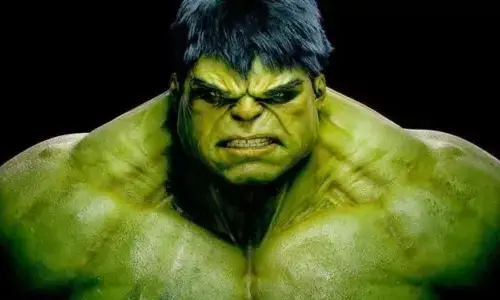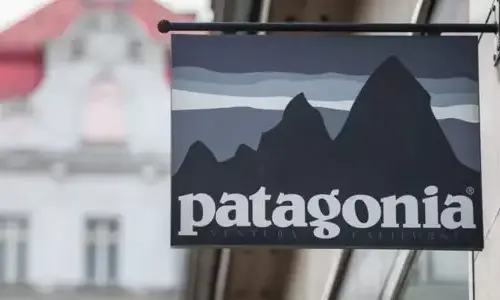10 crazy truth about the clown
Clowns have appeared in countless novels, performances and movies over 200 years.
The characters sometimes are scary but goofy are famous characters appearing at children's birthday parties or to FEA
But where are the clowns come from and why are they famous in global cultures today?
Here are 10 crazy truth about the clowns you should know.
From Clown first appeared in 1560.

The first writing document of the clown in English
Back then it was written as Clwne or Cloyne.
Clowne or cloyne used in documents mean;
It is said that the origin of the word Clown comes from
Translation of Klunni means a clumsy person.
2016 is the year of great clown fears.

In 2016, we saw great clown fears, which globally had some unusual clowns seeing.
These see people who dress like "Evil" clowns have attracted attention because they are found hanging around in the forest and schools.
This not only happens in the United States, but also Canada, England and 17 other countries around the world.
The first look was supposed to spark the movement in Green Bay, Wisconsin and was said to have been a public stunt to promote the release of a new horror movie.
As a result of these things, countries have taken different precautions to deal with global clowns.
This includes prohibiting the sale of clown costumes, banning clown outfits and masks in certain areas, and offering local government warnings to safely.
Clowns International is an association for

Clowns International, formerly known as the International Circus Clock Club was established in 1947 by Circus HeadVusiast Stan Bult.
The organization was formed after a tradition that began in the early 1940s by Billy Smart Circus Owner.
Clowns every year will r
Clowns are encouraged to visit and lie in the wreath to respect the character's character of the clown industry.
This tradition is repeated this year after year until 1947 when Stan Bult decided to form Clowns International.
The idea is to merge clowns across the globe to share industry knowledge and can connect to the network with Folk Circus.
Joseph Grimaldi is the first famous clown.

Grimaldi is considered the father of the clown, he is one of the first clowns for professional performances and he is the most famous in the industry to contribute his clowning.
For the first time he appeared on stage in England in 1802 as a clown, Joey Joey, who was known for slapstick humor and physical tricks.
In 1802, Grimaldi became Sol
Some of the first professional stage clowns along with Grimaldi were William Kempe and Robert Amine, both working with Shakespeare in the 17th century.
Clowns draw their face to exaggerate expressions.

Grimaldi was the inventor of the face painted that clowns wore like their stage makeup.
The first appearance, Grimaldi was wearing Son's face when he was playing the character Joey The Clown.
The theater called Sadler's well in London closed to refurbish in 1801 and reopened in 1802 with CL
Grimaldi wants to create a prominent appearance to reopen so that he spend a moment
This is when the face painted trend begins.
After that, he added a red triangle on his cheeks, grinning the red lips and thick eyebrows to exaggerate his exaggeration.
The biographer of Grimaldi Andrew McConnell Stott explains that this is the pillar at that time and this face paint became one of the most influential stage designs of the 1800s.
Pennywise is called the scariest clown.

The clowns have been used in horror movies and books for many years, are mysterious and evil characters.
""
Pennywise The Dancing Clown is a character in the novel that Preaths on children and is capable of shaping changes and manipulating reality.
Pennywise to haunt Maine children every 27 years old and disturbs because adults can't see.
The first fictional killer was in 1892.

Sir.
From Italian "Pagliacci" means the clown and the Opera tells the story of a love affair.
This love and betrayal leads the character as a clown to stab a lover.
Opera is done in the style of Commedia Dell'Ate, which is an Italian performance style related to the actors wearing masks and wearing clothes similar to the clown.
A Jester is not a clown.

You might think a clown and a Jester is the same thing because both are colorful entertainment.
Both wear colorful clothes to exaggerate their characters.
A clown is known as a slapstick performance artist and has a periodic plan.
However, a Jester is known as an entertainment artist who jokes and mocked and will be improvised on the spot.
The difference is that a clown makes their own fools while a Jester manes a fool's fool.
The clowns are linked to the Circus while the Jesters will be for the Royal Private Entertainment in the Middle Ages.
Coulrophobia is a fear of clowns.

The fear of the clown is a real thing and according to a survey conducted in 2016 by Chapman University, 7.8% of Americans participated in clowns.
The study looked at the top fears and clowns in the four most common answers in personal fear.
After the fear of the great clown of 2016, VOX conducted a survey that revealed the results that Americans were more scared than clowns than climate change.
Research shows that due to increased fear in random scenes of these cruel clowns, people are increasingly worried about their safety.
A poll was carried out as part of the survey showed that from 1,999 people participated, 42% was afraid of clowns in some capacity.
Research shows that about 1 of 3 voters aged 18-29, at least Coulrophobia is light.
There is an international clown week.

The International Clown Week was approved by President Richard Nixon in the United States on August 2, 1971.
It was held annually in the first week of August, with the concept of celebrating, announcing and promoting the clown industry.
The first celebrations arise in the 1950s with smaller gatherings and volunteer programs held to promote everything about Clowning around.
In 1967, the American Clown Club encouraged members to write to the National Assembly to perform an official week.
Clowns have been embedded in modern entertainment, through performance and movies.
Although over the years, there was a decline in the number of circus programs, their legacy will live through children's birthday parties and modern horror films.
 52ºc, New York
52ºc, New York







